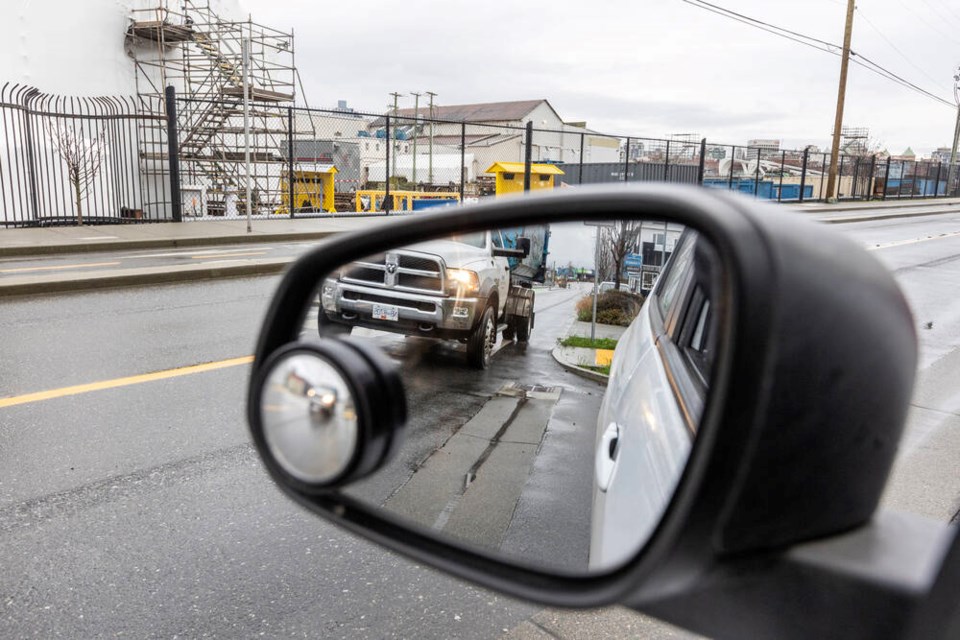The essentials of driving safely should be second nature to any driver: Don’t speed; keep your distance; avoid distractions; signal your intentions; and always keep your eyes on the road. If those basics are news to anyone with a driver’s licence, please don’t offer me a ride.
Most drivers do get it — but there are some other important but less obvious tips that can make a big difference for a safe commute.
Mirror adjustment is something that is often forgotten by many drivers before they hit the road. I’ve been caught out here myself. I’ve climbed into the car after someone else had been driving and then needed to change lanes, in a hurry, only to find that the rear view mirror was looking straight into the back seat, while the side view mirror showed me just that — the side of the car only.
Fortunately I was able to shoulder-check my way through the issue, but 10 seconds of mirror adjustment before I took off would have prevented the problem.
Be careful when grooving to your tunes. Yep — according to a 2015 study by Prof. Warren Brodsky, director of music psychology in the Department of the Arts at Ben-Gurion University in Beersheba, Israel — concentration levels tend to decrease when a favourite song is on.
We’ve all seen it: Drivers singing at the top of their voices, swaying to the beat and sometimes even playing imaginary instruments or clutching an invisible microphone. These can all have a detrimental effect on response time to on-road events.
Prof. Brodsky stressed that: “There’s no music that’s right or wrong for everyone, but that drivers must be aware of how certain types of music may affect them and avoid songs that cause distraction.”
Makes sense to me. When I hear a boom-boxer pulling up behind me, I often wonder where their minds actually are in those moments. It certainly can’t be focused 100% on their driving.
How often do you use or test your parking brake? They used to be called emergency brakes and for good reason. Up until the last 20 years or so brake failure was actually a thing. Nowadays with the technology applied to manufacturing vehicles, the possibility of brake failure is remote, but not impossible.
The good old emergency brake is installed for a reason. But you don’t want to find out that the cable that makes it work is rusted out or the e-brake pedal or handle is jammed as you’re careening down the Fraser Canyon. Applying the emergency brake when you’re parking, at least once a week, is a safe way to ensure you have that crucial backstop when you need it.
Clear out the clutter. There are times when we have to store things in our vehicles, especially after a visit to the big-box store. But loose objects left permanently lying around inside your car can turn into lethal projectiles in a crash.
A 25-year-old woman in Delta was killed several years ago when she was struck by a left-turning vehicle. Her laptop, stored in her backpack in the back seat, was hurled with tremendous velocity and struck her in the back of the head. Police crash analysts determined at the time that the woman probably would have survived otherwise save for that flying object.
Remember that an unbuckled passenger also becomes a loose object in a crash. Being crushed by a 50- to 100-kilo body is certainly not a pleasant prospect, so always insist your passengers are buckled up.
Drivers rarely get any instruction about these and other uncommon safety issues. So think about them going forward and make fixing them part of your safe driving routine.
Glove Box: A reminder this week from the Road Safety at Work Team: Their study conducted early this year showed that only 63% of respondents knew that flashing yellow lights displayed by work crew vehicles on the side of the road require drivers to slow down and move to the farthest lane if it’s safe. This could include tow trucks, road maintenance crews, hydro personnel or waste-disposal vehicles.
According to the survey, 96% of us now get it that you have to move over and slow down for red and blue lights, but the same law applies to service vehicles. When drivers see vehicles with red, blue or amber flashing lights, the “slow down/move over” law requires them to reduce speed to 70 km/h in an 80 km/h or higher zone or to 40 km/h in an under 80 km/h zone.



